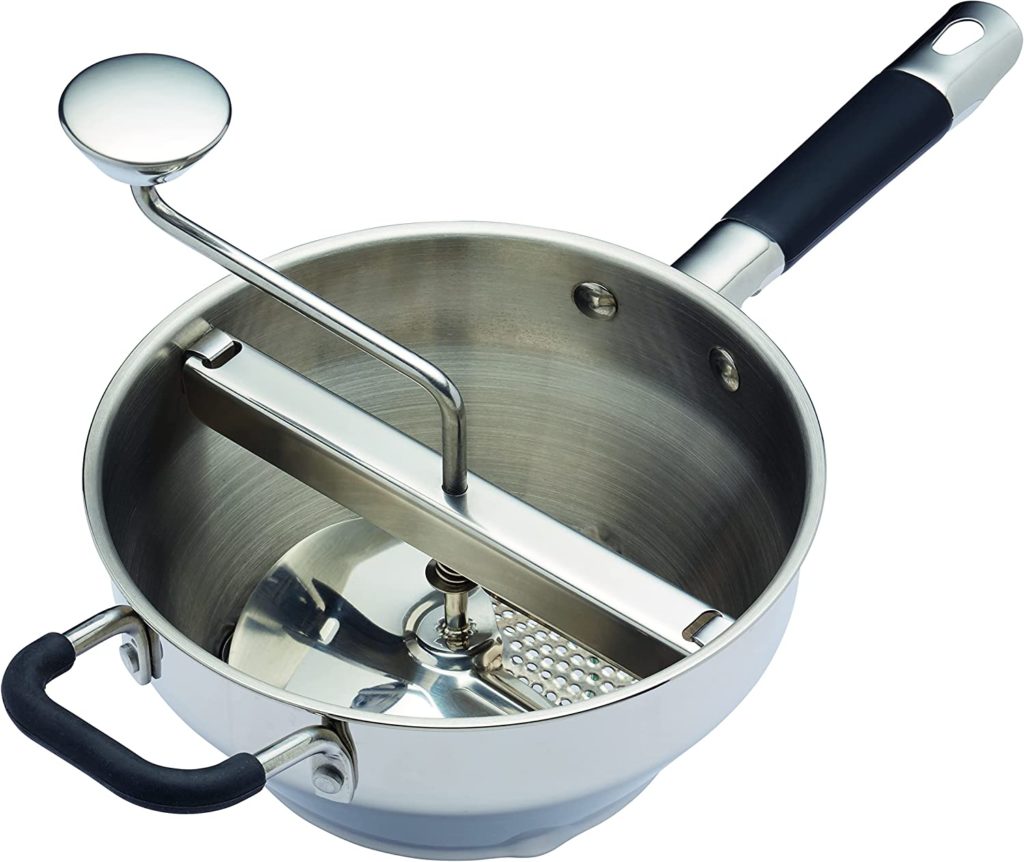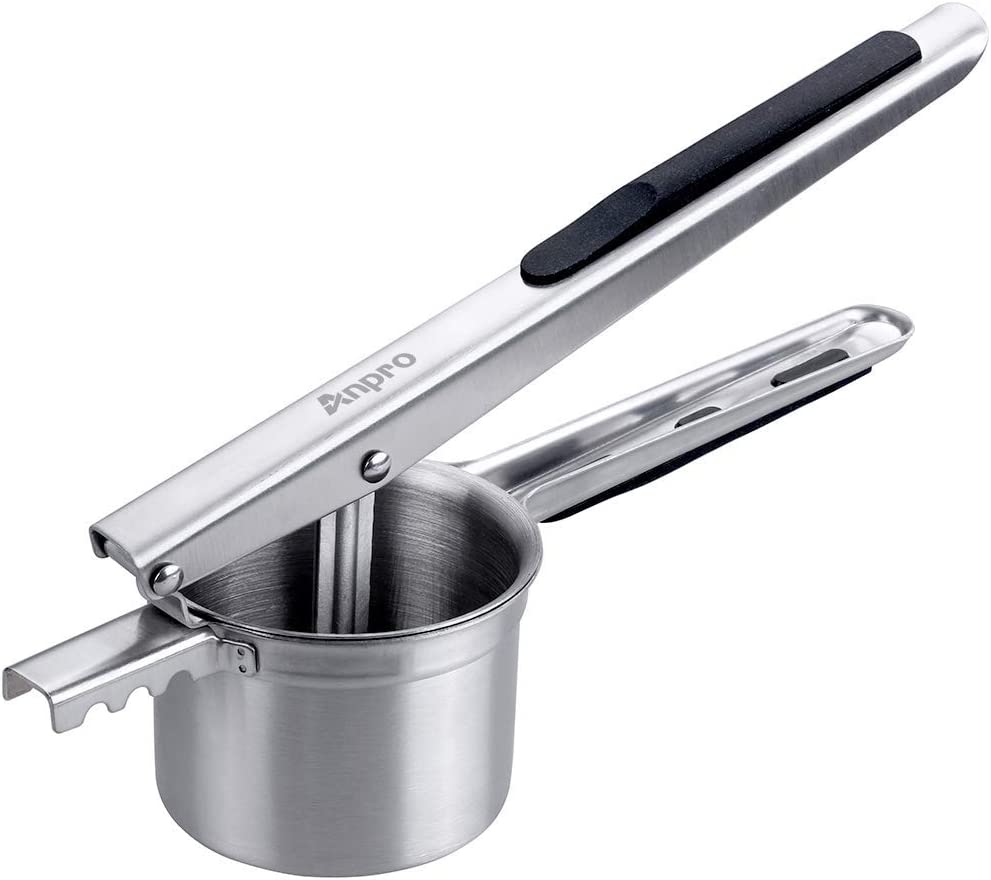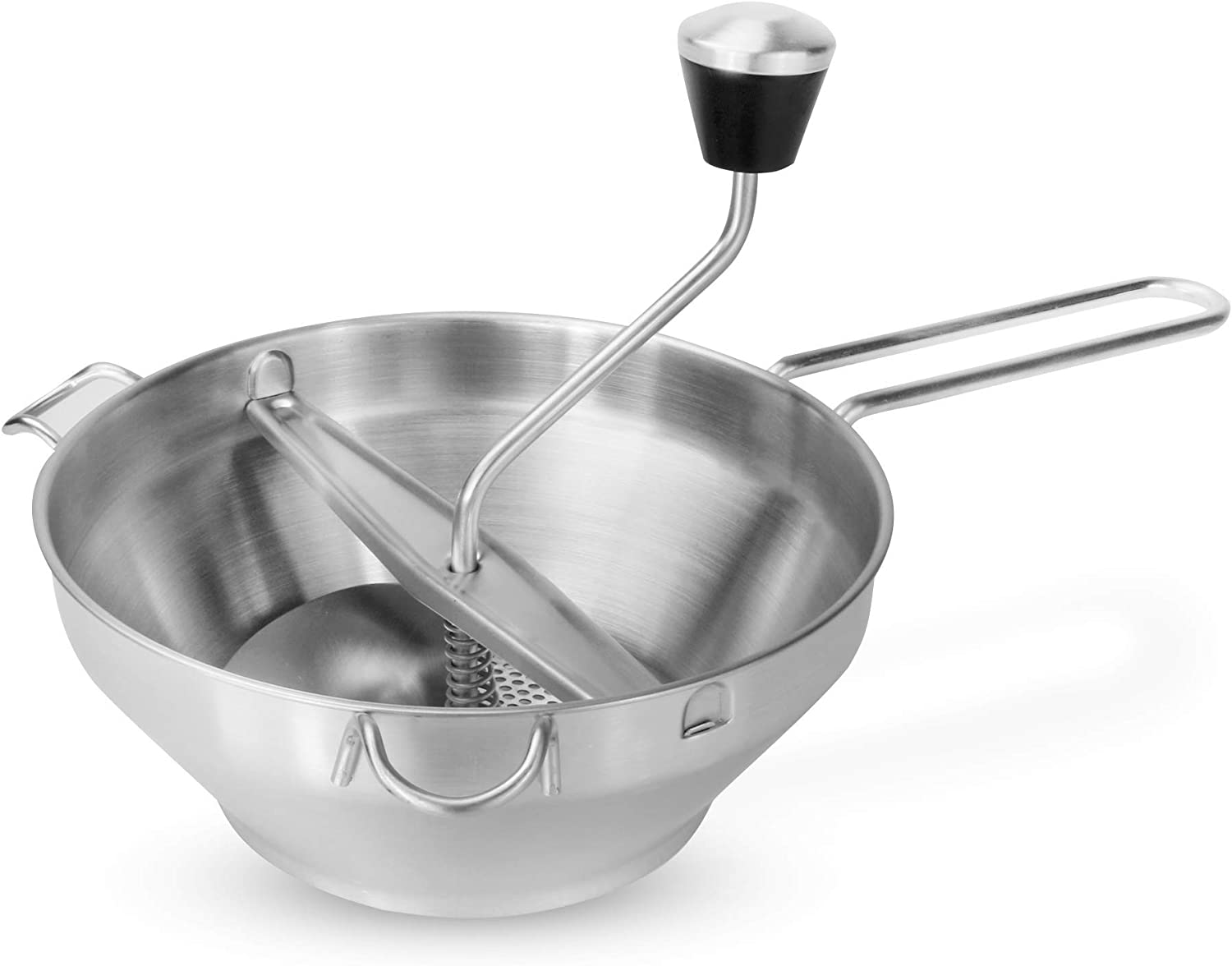When it comes to kitchen gadgets, there are plenty of options to choose from, but two of the most commonly used tools for mashing and pureeing food items are the mouli and the potato ricer.
Both of these tools are designed to make cooking easier by producing uniform textures without any lumps.
In this article, we will explore what a mouli and a potato ricer are, their differences, and their pros and cons.
What is a Mouli?

A mouli, also known as a food mill, is a kitchen tool used for mashing and pureeing food items. It consists of a bowl with a perforated bottom, a rotating blade, and a handle. As you turn the handle, the blade rotates and forces the food through the perforations, producing a smooth and uniform texture.
The mouli is a versatile tool that can be used to puree a wide range of food items, including fruits, vegetables, and cooked meats. It is especially useful for making mashed potatoes, tomato sauce, baby food, applesauce, berry jams, soups, and pureed vegetables.
Who Can Use a Mouli?
Anyone can use a mouli, regardless of their level of cooking experience. It is a simple and easy-to-use tool that requires no special skills or training. The mouli is also an excellent option for those who prefer to make their own baby food or have dietary restrictions that require them to consume pureed foods.
Pros of Using a Mouli:
- Produces a smooth and uniform texture without any lumps
- Versatile tool that can be used for a wide range of food items
- Easy to use and requires no special skills or training
Cons of Using a Mouli:
- Limited to small batches of food items at a time
- Can be difficult to clean if food gets stuck in the perforations
What is a Potato Ricer?

A potato ricer is a kitchen tool used to mash potatoes, sweet potatoes, and other root vegetables. It consists of a perforated hopper, a press, and a handle. You place the cooked potatoes or other vegetables into the hopper and press them through the perforations using the handle, producing a smooth and uniform texture.
The potato ricer is ideal for making mashed potatoes and other mashed root vegetables. It can also be used to make baby food, pureed fruits, and vegetables and as a substitute for a garlic press.
Who Can Use a Potato Ricer?
Anyone can use a potato ricer, regardless of their level of cooking experience. It is a simple and easy-to-use tool that requires no special skills or training. The potato ricer is an excellent option for those who frequently make mashed potatoes or other mashed root vegetables.
Pros of Using a Potato Ricer:
- Produces a smooth and uniform texture without any lumps
- Ideal for making mashed potatoes and other mashed root vegetables
- Easy to use and requires no special skills or training
Cons of Using a Potato Ricer:
- Limited to mashing potatoes and other root vegetables
- Can be difficult to clean if food gets stuck in the perforations
Differences Between a Mouli and a Potato Ricer
A mouli (also known as a food mill) and a potato ricer are both kitchen tools used for processing cooked vegetables or fruits, but they work in different ways and produce different results.
Method of operation
- A mouli is a hand-cranked device that forces cooked fruits or vegetables through a perforated disk. The disk can have various-sized holes, allowing the user to choose a coarser or finer texture.
- A potato ricer, on the other hand, works by pressing cooked vegetables (usually potatoes) through small holes in a perforated chamber using a lever or plunger.
Texture of the output
- A mouli produces a smooth and consistent texture, making it useful for making sauces, purees, and baby food. It can also remove skins and seeds from fruits and vegetables.
- A potato ricer produces a more coarse, chunky texture that is ideal for making mashed potatoes, gnocchi, or other dishes where a slightly textured consistency is desirable.
Versatility
- A mouli can be used for a wide range of fruits and vegetables, including tomatoes, berries, and apples, whereas a potato ricer is primarily used for potatoes and occasionally for other root vegetables.
Ease of use
- A mouli requires more effort to use as it involves cranking a handle, but it can process larger quantities of food at once.
- A potato ricer is easier to use and requires less effort as it usually comes with a lever or plunger, but it can only process small amounts of food at a time.
In summary, a mouli is better suited for producing a smooth and consistent texture, while a potato ricer is ideal for creating a more textured output like mashed potatoes. Both are useful tools to have in the kitchen, depending on the specific task at hand.
Summary
In summary, both a mouli and a potato ricer are useful kitchen tools for processing cooked fruits and vegetables, but they work in different ways and produce different results.
As we just covered, a mouli is a hand-cranked device that produces a smooth and consistent texture, while a potato ricer uses a lever or plunger to produce a more coarse, chunky texture.
A mouli can be used for a wide range of fruits and vegetables, while a potato ricer is primarily used for potatoes and root vegetables. Ultimately, the choice between a mouli and a potato ricer depends on the specific task at hand and the desired texture of the output.
If you’d like to know more, please view our guides to the best moulis and potato ricers.
